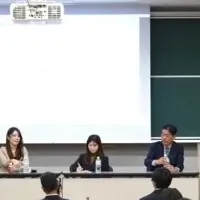
NASA Unveils Final Strategy to Enhance Human Presence in Low Earth Orbit
NASA's Final Strategy for Low Earth Orbit
In a landmark initiative, NASA has formally released its comprehensive strategy for maintaining and expanding human presence in low Earth orbit (LEO). As part of its efforts to promote the broader utilization of space, this strategy outlines the agency's ambitions to enhance microgravity science, technology, and exploration for the benefit of humanity at large.
With input gathered from a diverse array of stakeholders—including industry leaders, academic institutions, and international partners—NASA's Low Earth Orbit Microgravity Strategy is set to serve as a crucial guideline in ushering in the next generation of continuous human presence in orbit. The long-term objectives focus on fostering economic growth while bolstering international collaborations.
As NASA prepares to transition away from the International Space Station (ISS), scheduled for retirement in 2030, this strategic framework is seen as pivotal for ensuring U.S. leadership in space endeavors. According to Pam Melroy, NASA's Deputy Administrator, this initiative represents a crucial step forward in solidifying the nation's role in the cosmos. She highlighted the collaborative effort involved in formulating this visionary roadmap, emphasizing the agency's commitment to sustaining benefits from space exploration that advance science and innovation.
The planning for this strategic framework began in early 2024, aiming to establish a clear set of goals and objectives for the LEO microgravity environment. NASA solicited feedback from its workforce, governmental bodies, academic circles, and international space agencies, ultimately reviewing over 1,800 comments and holding workshops to refine its objectives. The finalized framework encompasses 13 goals and 44 objectives distributed across seven critical areas:
1. Commercial low Earth orbit infrastructure
2. Operations
3. Science and research
4. Technology development for exploration
5. International cooperation
6. Workforce development
7. STEM engagement and public outreach.
The agency's initiatives in low Earth orbit are intrinsically tied to broader ambitions aimed at deep space exploration. LEO serves as a valuable and accessible proving ground, essential for testing technologies and conducting research necessary for human missions set to explore destinations like the Moon and Mars. The proposed objectives will thus facilitate substantial human research, essential technology trials, and the preservation of vital skills that are integral to operating within microgravity conditions.
Robyn Gatens, Director of the International Space Station and Acting Director of Commercial Spaceflight, affirmed that the finalized objectives delineate a distinct pathway as NASA moves from the ISS to a new era populated by commercial space stations. LEO is designated to remain a hub for scientific inquiry and technological progress, with strategic investments aimed at nurturing a commercial space ecosystem benefiting both NASA and its collaboration network.
The sustainable goals established for LEO are not merely procedural but represent an ongoing necessity for maintaining an “unbroken, continuous heartbeat” of human presence in orbit. For NASA to effectively prepare for future missions to Mars, long-duration flights will be imperative to mitigate potential risks. Ensuring reliable access to LEO necessitates a diversity of providers who can operate with regularity and dependability.
The objectives set forth will also guide the development of future commercial space stations, enhancing NASA's missions while reducing risks associated with human expeditions to Mars. The agency aims to preserve operational skills that facilitate critical scientific research while encouraging ongoing engagement with international and commercial partners.
John Keefe, Director of Cross-Agency Strategy Integration at NASA, identified continued collaboration and consultation as fundamental to the strategy. The established objectives are integral in developing an actionable plan to navigate current and future demands, focusing on cultivating key capabilities necessary for the LEO environment.
In conclusion, NASA's final strategy for low Earth orbit embodies a bold and dynamic approach to space exploration, aiming to foster innovation and cooperation that are essential for humanity's next great leap into the cosmic frontier. This strategy not only signals a new beginning but also aspires to create enduring opportunities that will benefit not just the agency, but all who look to the stars.
For more details and the complete framework of NASA's microgravity goals and objectives, you can visit NASA's official page.
Topics Other)










【About Using Articles】
You can freely use the title and article content by linking to the page where the article is posted.
※ Images cannot be used.
【About Links】
Links are free to use.